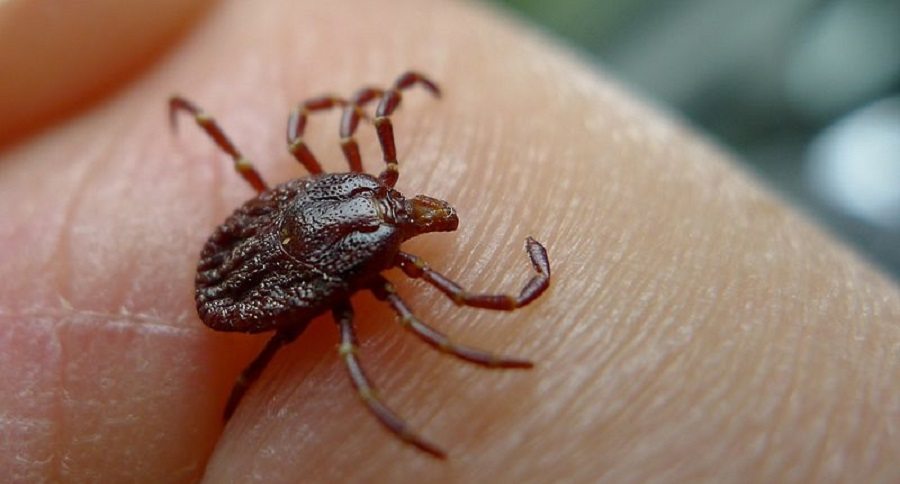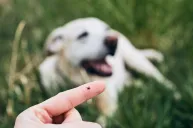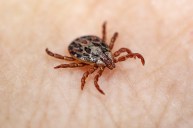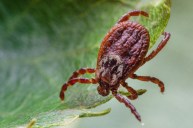Diseases caused by tick bites are on the rise across the country. How can you avoid tick-borne diseases and protect yourself and your family?
Lyme Disease. Rocky Mountain Spotted Fever. Anaplasmosis. Colorado Tick Fever. News stories show that now cases involving the terrible encephalitis-causing Powassan Virus and a bizzare tick-induced red meat allergy are on the rise. Diseases contracted via tick bites are becoming more and more prevalent everywhere. Obviously, people reading this article are likely to spend a larger portion of their time outdoors, so the question arises: how does one protect themselves from unwelcome tick-borne diseases?
The most common-sense solution is one that is probably unpalatable to the readers here: don't go where the ticks are. A no-brainer for sure, right? Well, we all enjoy the outdoors, so we'll have to know what to watch out for. If you know where ticks commonly are, you can plan to increase your chances of being where ticks aren't.
Ticks are generally most active from April to September, though I can personally say that I have pulled them off the dogs in an unseasonably warm New England March. I have also pulled many ticks off my clothing while deer hunting in Maine in November. However, most ticks thrive in semi-humid, warm to hot environments.
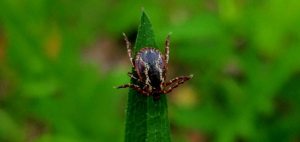
Questing Dog Tick on a blade of grass. Photo by author.
Keep an eye out for ticks in long grass and shrubs - you may even spot them as little dark spots on tall grass as they "quest", or perch on foliage with their front legs spread wide, ready to hook onto a passing animal or human. Other common locations are brush and leaf piles as they lie in wait for a roaming field mouse or small rodent to latch onto. Any location where a tick can find a quick passing meal is a prime location for you to pick up unwanted guests; so be sure to walk in the middle of trails. Definitely avoid high-traffic game areas like deer trails or similar game paths; just as you go to the supermarket to get your victuals, ticks locate themselves in the areas of highest food probability.
Stay Vigilant
If you're outdoors, you need to conduct frequent tick checks. Wear light clothing: pants and long sleeved shirts if your activity allows. It will be much easier to see the little bastards crawling on you with some color contrast to help your eyes. Ticks in the nymph stage can be very tiny indeed; smaller than a poppy seed - so any help you can give yourself to assist in spotting will be beneficial. I once walked through a tick hatch and thought I'd merely brushed a thistle or seed pod; the little flecks on my clothing appeared to be minuscule seeds. It was only a few minutes later when I looked at the "seeds" on the fabric of my pants that I realized that I had hundreds of baby ticks crawling over my body. While frantic shrieking, swiping, and a Bic lighter solved the breathtakingly creepy quandary in short order, I was left stunned that I almost dismissed all those ticks as something benign.
If you have a partner with you, have them check the areas of your body you can't readily see; do the same for them. If you have children with you, give them extra thorough checks frequently. Be sure to check your hair thoroughly and in your nether regions as well. Ticks will burrow in anywhere they can, and they will be tickled pink to enter your waistband and head south in search of tender skin. Early detection is the key; get ticks off before they get in you. The Powassan virus can enter your bloodstream in as little as 15 minutes, so it's important to keep an eye out constantly.
I'm told an ordinary lint roller works well to do an in-field impromptu tick removal service. When you get home and undress, be sure to tumble dry your clothing on high heat for 10-15 minutes to kill any ticks on your clothing.
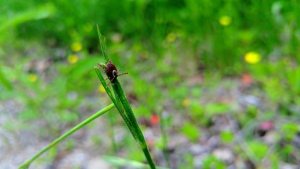
Image by author.
Be Repulsive!
There are some great products out there that can tip the scales in your favor dramatically. The CDC has some great information on ticks - a DEFINITE must-read summer blockbuster - and they have this to say about repellents:
- Use repellent that contains 20 percent or more DEET, picaridin, or IR3535 on exposed skin for protection that lasts several hours.
- Always follow product instructions. Parents should apply this product to their children, avoiding hands, eyes, and mouth.
- Use products that contain permethrin on clothing. Treat clothing and gear, such as boots, pants, socks and tents with products containing 0.5% permethrin. It remains protective through several washings. Pre-treated clothing is available and may be protective longer.
The Environmental Protection Agency has a great repellent selector available based on the type of activity you'll be doing. It's worth a look-see and can be found by clicking here.
Personally, I've had great luck this year using Repel Tick Defense - it uses picardin to ensure you're distasteful to ticks, black flies, and mosquitoes too. A buddy who spends his spring months hunting turkeys swears by treating his clothes with permethrin. There are lots of great repellent products out there; be sure to take advantage of them to minimize your exposure to tick-borne diseases.
As always, use care when applying repellents to children - parents should always apply!
Last Resort
Okay, so you did everything right to keep ticks off your body... but you do a tick check when you get home, and you found one dug in you. What do you do?

To remove a burrowed tick, grasp close to the body and pull straight up. Image via wikimedia commons/CDC.
First off, don't panic and rip the offender out the second you lay eyes on the evil beast. A quick rip-out is liable to leave the head parts in your skin to become infected, and doing that is more likely to result in disease. Use tweezers or a purpose-designed tick removal tool. Grasp the body of the tick as close to the skin as possible, and pull straight out with a steady pressure. Try not to squeeze the tick too hard; this can cause the tick to regurgitate into your bloodstream. Also, don't use peppermint oil or a match to try to get the tick to pull out on its own; an agitated tick will likely regurgitate.
Save the tick in a zip-lock bag and note the date, in case problems arise down the road. Monitor your health and watch for classic signs of tick-borne diseases: rashes, hives, or high fevers. Educate yourself (again, the CDC is a great place to start) on what symptoms to look for. Besides viral diseases, ticks can also cause partial temporary paralysis and other issues - children are particularly susceptible.
However, don't let the threat of ticks stop you from enjoying yourself in the great outdoors. Just be sure to conduct frequent tick checks and do a thorough personal inspection when you can. Tick-borne diseases are nasty to be sure, but an ounce of prevention and observation will help guarantee you have a great time outdoors whenever you go.
NEXT: THIS BARRED OWL WOULD LIKE YOUR FISH, PLEASE
https://rumble.com/embed/u7gve.v3tpc7/
